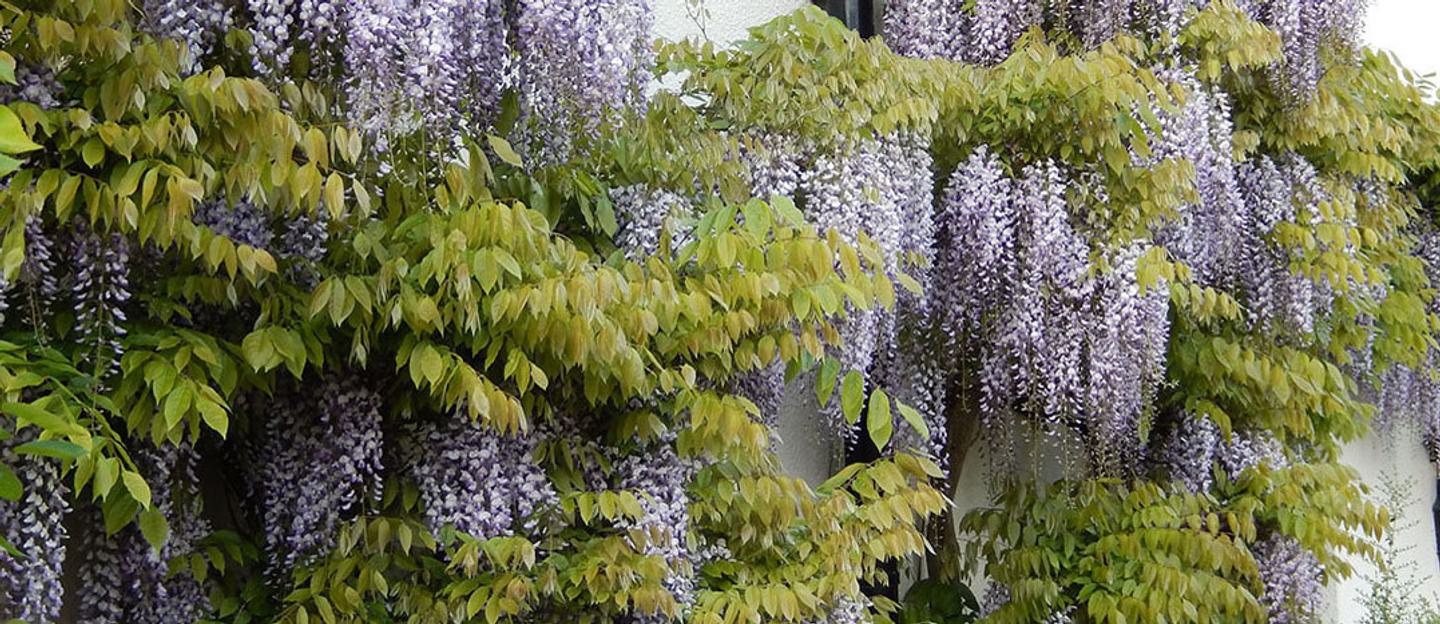Guides
Pruning and training wisteria
If you're growing wisteria, you'll be after that exquisite, romantic display of pendent blooms. Be it draped over a pergola, festooning a facade or standing like a small tree, you'll need to prune it to get the most from it. Left to its own devices, you might get a great luscious mass of twining leafy growth, but no flowers, or ones that are mostly hidden, and no-one wants that! Indeed, wisteria can also be pretty vigorous, so regular pruning is essential to keep it under control.

Wisteria needs pruning in summer and winter, and some maintenance is also needed in spring. One of the key things to remember is that when you train shoots into a horizontal position, they will flower more. Also keep in mind that taking off excess leafy growth lets sunlight reach the base of shoots, encourages short spurs, and encourages the formation of flower buds.
Summer
As young growth develops in summer, train shoots onto your support structure, untangling and spacing them out as required. Bear in mind that most flowers will develop on horizontal growth (did we mention this already?!). Keep tying in the growth that you are keeping as the season progresses. As they mature, they will begin to support themselves.
In July or August, cut back all the current season's whippy shoots to about 30cm, or 5 leaves from the main branch. Don't worry too much about cutting back to a bud, this is just a rough hacking back - the precision work is done in winter. The aim at this time of year is to get sunlight to ripen the wood. Ripe wood makes for flowers!
Winter
In January or February, return to those shoots you cut back to 30cm. Now you want to take these back again, leaving just two or three strong buds. This is where those delicious flowers will form - make sure they won't be obscured! This time, make your cuts just above the bud.
Also look for any growth that appeared after the late summer pruning, and take this back to 15-20cm (6-8in). Take out any frost-damaged shoots as far as a healthy bud.
The overall impression should now be a neat framework with little spurs protruding from it. When spring comes, all the plant's energy will surge into those buds and give you that superlative display.
Spring
In spring, again take out any damaged shoots that become apparent. On young plants, remove thin, weak shoots, while continuing to train the strongest shoots into your structure. Keep tying in and if needed, prune back any too-vigorous growth to about 15cm. Chiefly, though, enjoy the fruits of your earlier labours!
Older plants
On mature plants, you may need to take out branches that are growing over windows or heading in the wrong direction. You can hard prune wisteria, taking back thick old stems to a main branch. It can be best to do this in sections, so you don't accidentally take out the wrong stems - use ribbon or string to mark the stem you are taking out. Aim to create a well-spaced framework.
Hard pruning will stimulate growth, but you may get no flowers for a year or two. Once the shoots mature, resume routine pruning as above and flowers will follow.